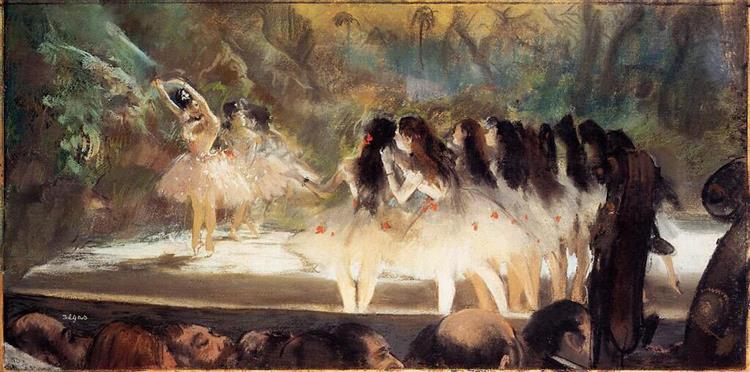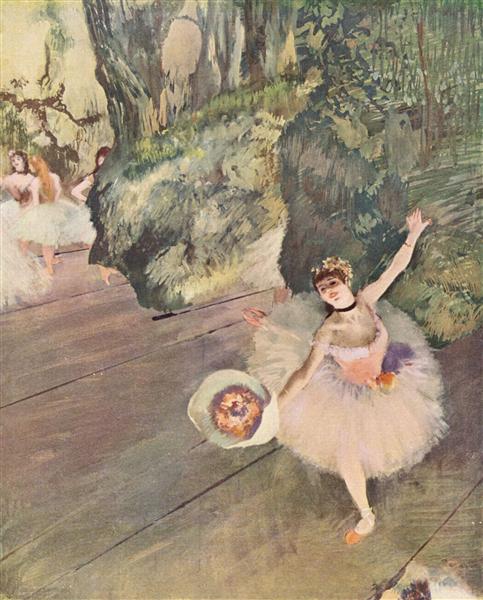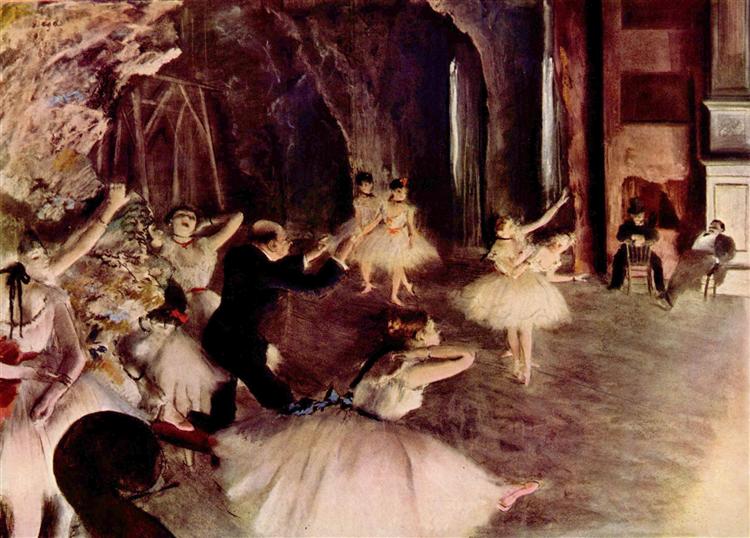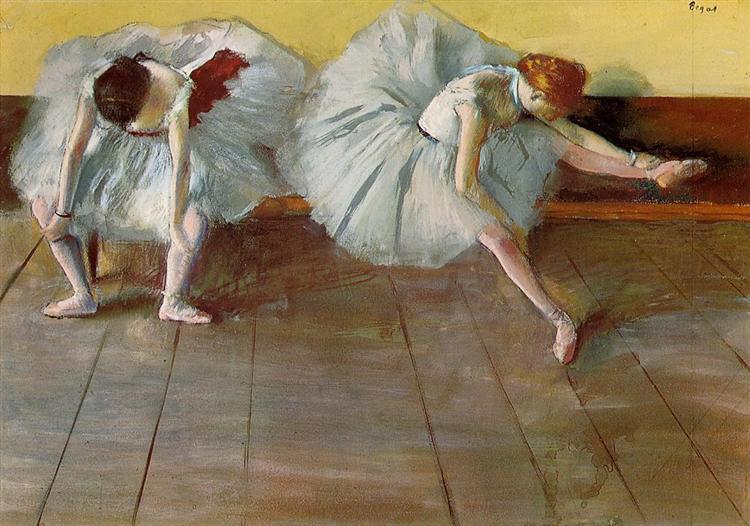If I were to ask you to think of a painting of a ballerina, I could almost bet money on the fact you would picture ‘Ballet at the Paris Opera’, ‘Dancer with a Bouquet of Flowers’, or many of the other works by Degas. Degas’ paintings are synonymous with our imaginations of ballet and its aesthetic form. The impressionist painter worked for pleasure rather than necessity and his work was the result of his fascination for capturing the illusion of the dancer’s movement on a two-dimensional space. There are ‘implied’ lines within his paintings where one’s eyes are drawn across the canvas and it alludes to a sense of movement. This can be seen below in the lines of sight provided through the gaze of the audience and of the dancers in the corps, each looking in different directions and guiding the eye of the viewer from one section to the next. Similarly, with ‘Dancer with a Bouquet of flowers’, the flowing lines of the girl and the background indicate that she is dancing.
Beyond this expression of movement, Degas can be seen to capture the reality of the dance world; the unglamorous, messy elements of such a life that we do not see when the dancers are on stage. This alternative lens was afforded by the prolonged amount of time he spent in the company of ballerinas. As with any subject, a sustained interaction with something allows one to develop a deeper connection and more advanced understanding of it. He gained access backstage at these events and in rehearsal spaces, developing a paternal relationship with the dancers. By keeping his subject consistent, Degas was able to better observe the impact of different variables on their dancing, displaying all levels of their emotions and experiences. In a sonnet he wrote that the ‘queenly air’ of a ballerina is achieved through makeup and distance and that realism can only be uncovered by removing these things.
Whilst painting such as ‘Dancer with a Bouquet of flowers‘ (Above) depict the grace and elegance we associate with dancers, many of his pieces present this alternative, closer view, one without distance or makeup. Degas preferred to portray ballet by removing the poetry and the romance, stripping away the illusion and instead revealing the hard work, the boredom, and the everyday beauty behind all the makeup and performance. He spent time studying the imperfections of the dancers in rehearsals. His painting ‘Stage rehearsal’ encapsulates this. The messy and chaotic nature of a rehearsal space enables us to imagine the critique from the men, how the dancers felt under such scrutiny, and the anxiety of those waiting to perform. By comparing ‘Dancer with a Bouquet of flowers’ with ‘The Rehearsal of the ballet on Stage’, one can see Degas’ efforts to convey the more ‘real’ side of ballet and not simply the end product of all the hard work.
Degas dedicated much of his time to painting ‘modern life’ in Paris which, at the time, consisted of slums and brothels. Equally, the Ballet and the Opera were fashionable parts of Parisian life in the 1870s. They were a blend of classical beauty and modern realism as the dancers provided an art for entertainment but, as such, they were not respected in their profession. Arguably, Degas’ paintings depict the degrading nature of ballet at the time and the strain felt by the girls involved as they are objectified and sexualised by the men who observed them. Deux danseuses or ‘Two dancers’ displays the effort, both mentally and physically, that is required of the dancers. Though we cannot see their faces, the dancers appear exhausted through their posture. The viewer can feel the emotion through the painting and it evokes a sense of empathy where we feel for these girls and what they were going through.
Ballet remains a romanticised phenomenon in the eyes of many, however, the work of Degas displays such a lifestyle with more breadth. He was able to reveal to us all of their human realities. There is no space for an idealised depiction and, instead, he contributes images of the reality of the stress and strain ballet can take on those involved, especially in the context of 1870s Paris.
-Georgia Licence
Junior Girl
Girl Museum Inc.




